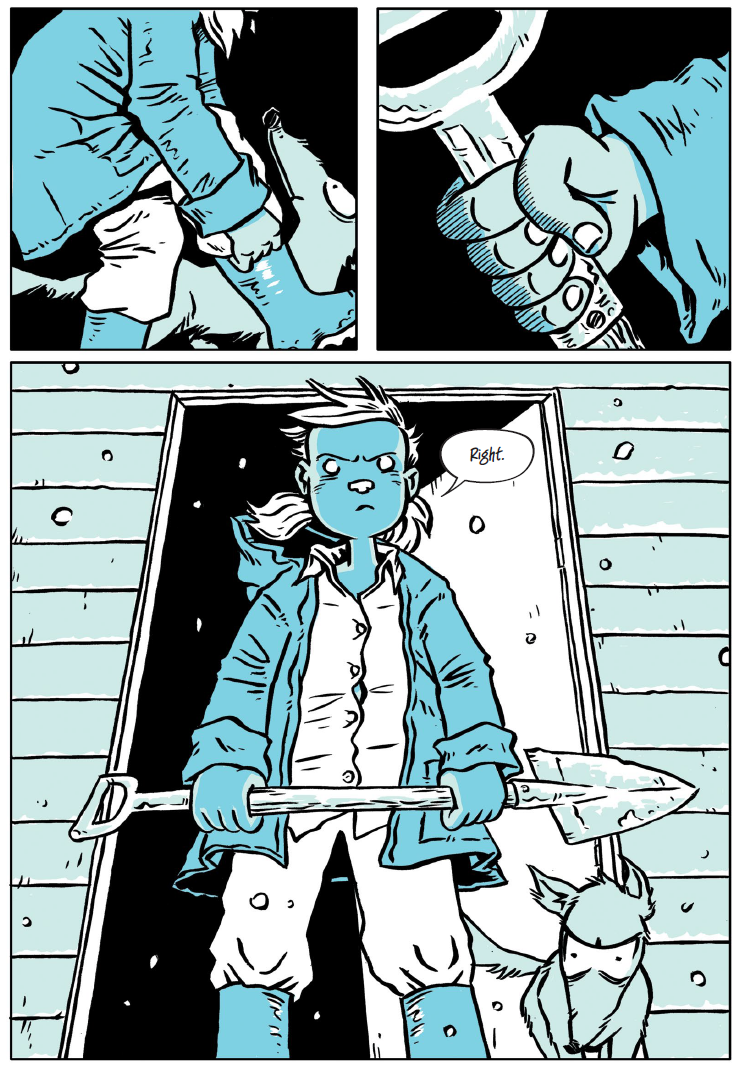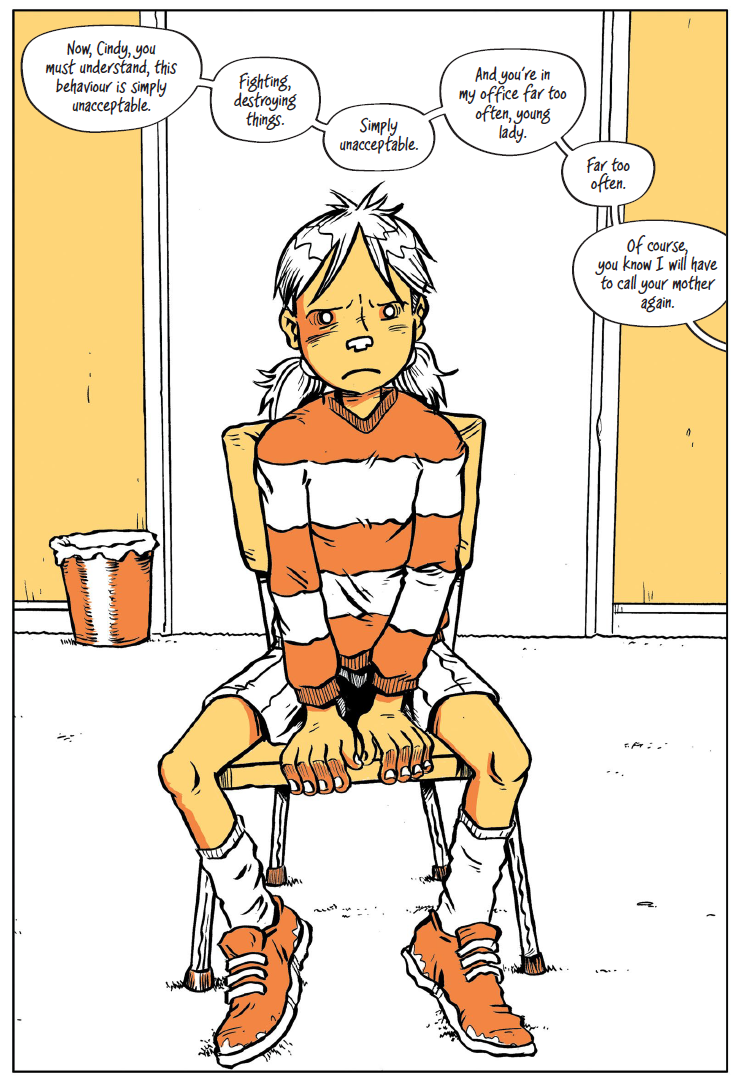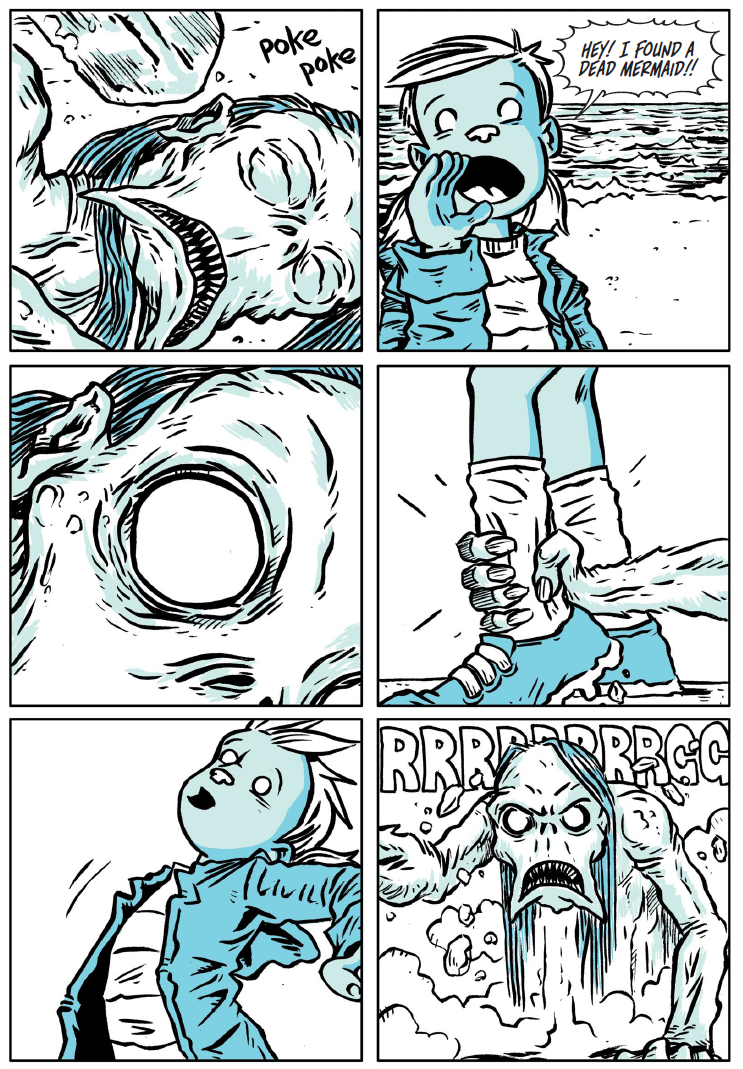Speaking of the halcyon days of the antediluvian internet, the Mindless Ones blog began in 2008. If you’d asked me, I would have bet the site was a little older, but that’s due to my own faulty memory as much as anything else. Point of fact, although the comics blogosphere was a brief moment in time, it lasted at least long enough to measure multiple stages. By 2008, the bloom was perhaps off the rose regarding single-proprietor review blogs, which is one reason why the few that launched that late in the cycle tended to be group blogs. Mindless Ones was very much what you might expect a group blog to look like that sprang from the Barbelith online community: smart, funny, fixated on the work of Grant Morrison to a perhaps unseemly degree.
Not too long after the Mindless Ones started up, they began posting comics from co-founder Dan White, aka The Beast Must Die. The first was a weekly comic panel called Terminus: a wry, often ironic window onto strange universes not all that different from what you might see in one of Tharg’s Future Shocks, albeit leavened throughout with the influence of Gary Larson. A man steps out his front door, ostensibly to leave for work, dressed in a suit and carrying a briefcase, and is greatest by a giant floating disembodied eyeball staring at him directly. The beset businessman bows his head with resignation; the caption reads “Not again.” (That from the 09/16/09 installment.) Another man sits in a room strewn with demolished furniture - broken chairs, lamps, a busted CRT TV, shattered vinyl LPs. “The good news,” reads the caption, “was he’d put an end to the furniture’s evil plot. The bad? The conspiracy had spread to his clothes.” (From 07/15/09.)
But then, towards the end of the run of Terminus, a familiar face appears, in the strip for 10/15/09. A young girl, maybe around 10 or so, hefting a bloody baseball bat and flanked by her trusty dog, stands astride a dead alien next to a crashed flying saucer. The caption reads, “Another alien invasion seen off by Cindy & Biscuit...”

Now, there was no expectation at the time that any character from Terminus would ever recur, any more than Larson needed to spin off the “cow tools” guy for his own adventures. Most of the subjects of Terminus really didn’t require elaboration. But that one panel held the seed of something much greater. And so it was that Cindy and her dog began appearing in their own solo adventures, compiled at first by White as a self-publisher, and now, many years after the character first appeared, by Oni Press. Their first volume of Cindy and Biscuit strips, We Love Trouble, reprints the best of the characters’ run so far.
The conceit behind Cindy and Biscuit, such as it is, remains indexed to the punchline of that very first Terminus strip: a 10-year-old girl named Cindy and her dog Biscuit are among this world’s first line of defense from various mystical and sci-fi-flavored threats. There’s not a lot in this universe, apparently, that can really compete with a pissed off little girl brandishing melee weapons. The problem is that, otherwise, she really is just a normal 10-year old girl, and not even a cool 10-year old girl. A 10-year old girl with, let’s be frank, definite weird vibes.
There are a few touchstones here, the first and most pertinent being, I think, Calvin and Hobbes. Not a specious association. White spoke with Mat Colegate for TCJ in March of 2016, not long after the self-published Cindy and Biscuit was nominated for the Young People’s Comic Award at the British Comic Awards. In that conversation, while relating his earliest cartooning influences, he stated: “my dad gave me a Calvin and Hobbes book and I realized what people could do with the form.” White isn’t the first person to relate that specific formative experience with Bill Watterson’s strip. (As someone old enough to remember reading Calvin in newspapers, at the time it never struck me as the one to beat, on account of how I was too busy being obsessed with Berkeley Breathed when I was still in single digits. I’ve been playing catch-up to my demographic ever since, which should come as a surprise to precisely no one.) Anyway, it’s a common enough influence as to be rote, but Cindy and Biscuit pulls on one specific thread from the earlier strip - that we all know Calvin lives in his own head, and all his fantastic adventures with his tiger pal are just make-believe. But what if, you know, he actually was Spaceman Spiff, but still had to come home and deal with the indignities of bedtime and school projects? What if the evil snowmen really were out to get him? That might actually not be such a salutary development for ol’ Calvin, not in the long run.
And so too here for Cindy. White is smart enough not to play around with the question of whether or not all of Cindy’s adventures are just make-believe; they’re real, and her various shenanigans have real effects in the real world. An evil spirit banishes Cindy to another dimension in one of the longer passages here, and she goes missing in the real world for a fair amount of time. This after that same evil spirit had been following Cindy around, causing havoc by wrecking stuff around her and leaving the girl to hold the bag. Of course, it makes all too much sense that scruffy Cindy would have behavioral problems - that she’d demolish a peer’s art project at school and trash a load of her mother’s wash. She’s got bad vibes, remember? No father in the household. Such a sad thing to see. Tut tut.
A strip early in the book features a classroom trip to the seaside. The class has a worksheet to fill out, but Cindy is split off by herself because the rest of the class thinks she smells weird. Left to her own devices, she runs across macabre ancient statuary and a dying mermaid. Then the dying mermaid tries to kill her, and she in turn has to try to kill it with a shovel. After chasing it back into the water she trudges back to her school group, soaking wet and stinking of salt. The dying mermaid, like a few other elements from these strips, is familiar from an earlier Terminus panel. Elsewhere, Cindy battles some white-furred simian monsters with Tinkertoy pieces for heads that also premiered in Terminus. Terminus was in many respects a kind of dry run for the ideas that White would explore to greater depth in Cindy and Biscuit, but minus the occasionally cloying darkness. There’s a nasty streak in Terminus, filled as it is with sudden deaths, suicides and dark reversals, that seems to have filtered away by the time we get to Cindy and Biscuit. The latter strip can be melancholy, yes, but never mean. The world is plenty mean enough to Cindy, but we are gifted the perspective and the sympathy to see it through her eyes. Valuable lessons from Watterson.
Throughout, even as his style evolves, White never loses the pleasant roundness that defines his work as far back as the earliest Terminus panels. He has an expressive and attractive line, thick brushstrokes that can switch between cute kids and animals and dreadful carnivorous monsters without missing a beat. It’s a style made to read clean and uncluttered on a computer screen, and so plays very well in print. In terms of color, White usually only uses one slice of the palette at a time, changing up the mood for each part of the book - one story will utilize cool blue and teal, another orange and gold. Very clever use of color. Every story reads a little different.
Look at “Cindy & Biscuit and the Camera”, one of the later features here - a story told almost entirely in photographs, of the girl and her dog on a trip to the woods. The journey begins idyllic enough, with bare feet in pellucid streams and placid snails on fat leaves. But soon there is death and mystery, a crashed spaceship disgorging a monster from another world. We know the monster is bad news because it’s left a trail of destruction behind it, so we don’t feel too bad when we see Cindy has removed the beast’s head and set it on a pike. Girl is hardcore. Sadly, none of the pictures come out, which strikes me as a very real flavor of disappointment that no one under 35 will even remember: taking a whole-ass role of film only to somehow lose the whole set to overexposure. So, of course: still no proof of her grand adventures. But Cindy knows she saved the world, and that’s all that really matters.
The post Cindy and Biscuit Vol. 1: We Love Trouble appeared first on The Comics Journal.






No comments:
Post a Comment